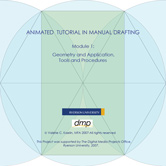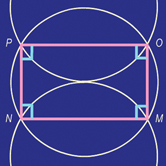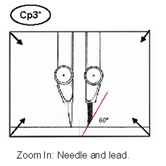The Animated Tutorial in Manual Drafting in Six Modules
A 2007 Ryerson University Digital Media Projects Office Grant enabled me to write the first of a six-part Flash animation for classroom instruction, which was produced by their instructional technology team.
Mathematics Consultant: Soheil Homayouni, PhD
DMP Manager: Restiani Andriati
Project Manager: Sanjay Lakhana
Animator: Ilona Karasyova
Sound Engineer: John Hajdu
The case for facilitating old technology using new technology rests on key points corroborated by specialists in human spatial performance.
- Human spatial cognition is processed through an integration of the visual system, the vestibular system and the proprioceptive systems: all three (Wang et al, 2006).
- Individuals lacking spatial dexterity have a better chance of succeeding in a multisensory learning environment (Bradford, 2008).
- What enhances the learning performance of the impaired enhances the learning performance of the population at large (Freund, 2001, 2010).
- In the Western intellectual tradition, spatial representation rests on a chain of mathematical theory, tools and equipment reaching back to the Egyptians. Staying in touch with that tradition prevents us from surrendering our problem-solving responsibility (Hutchins, 1995).
- Our alumni who go on to study computer-aided drafting notice that they progress more rapidly than those who have not had prior spatial training because they have already learned to conceptualize orthographically (Ng, 2012).

Module 1 DVD Cover Art. Animated Tutorial in Animated Drafting. |

“3. Definition 10.” “Module 1: Geometry & Application, Tools & Procedures.” Animated Tutorial in Animated Drafting. DVD Screen Print |

“Module 2: Introducing Conventions of Spatial Representation in Drafting.” Animated Tutorial in Animated Drafting. Storyboard Page Cp1-3. Toronto, 2007-11. |
Produced
Module I:
Greek constructions are tested against basic drafting protocols.
The use of basic equipment: T-square, parallel rule, set square, drafting desk.
Proper use of drawing instruments.
Written; Seeking Funding for Production
Module 2A:
The Idea of spatial representation.
Review and expand Greek constructions to explain isometric templates.
Use of isometric templates to create more complicated representations
Module 2B:
Orthographic figures
Scaling
Projected
Module 3
Lettering and nomenclature
Module 4
All about circles
Module 5
Sections: The Inquisitive Knife
Module 6
Conventions of Perspective Drawing
Module 1 is available here. All proceeds go to the production of Module 2
References
Bradford, John.
“Using Multisensory Teaching Methods.”
Dyslexia Online Magazine, 2008
Freund, Peter.
“Bodies, Disability and Spaces: the social model and disabling spatial organizations.”
Disability & Society 16, no. 5, (2001, 2010): 687–706. doi: 10.1080/09687590120070079
Hutchins, Edwin.
Cognition in the Wild.
Cambridge, MA: MIT Press, 1995.
Ng, Grace.
Personal conversation with this DGC Ontario Art Department Apprentice. 2012.
Wang, R.F., Crowell, J.A., Simons, D.J., Irwin, D.E., Kramer, A.F., Ambinder, M.S., … Hsieh, B.B. (2006).
Spatial updating relies on an egocentric representation of space: Effects of the number of objects.
[Electronic Version]. Psychonomic Bulletin & Review, 13(2), 281–286.
^ back to top of the page
To Cite this Page
| CMS |
“The Animated Tutorial in Manual Drafting in Six Modules.” Valérie C. Kaelin Website; Scenography; Pedagogy; January 1, 2013. Accessed Month, Day,Year. http://www.valeriekaelin.com.
|
| MLA |
Kaelin, Valérie C., “The Animated Tutorial in Manual Drafting in Six Modules.” Toronto, 1 Jan. 2013. Web. Add Day, Abbreviation for Month, Year. |
|

